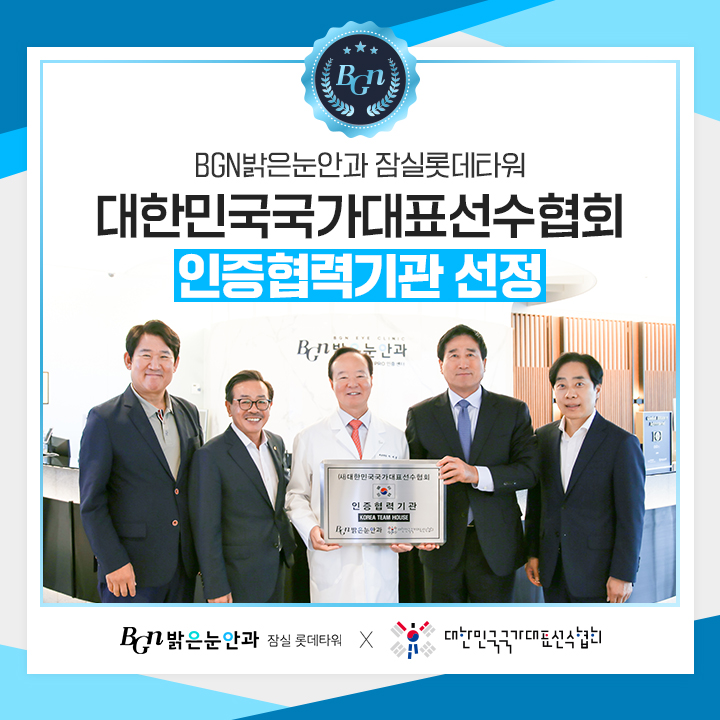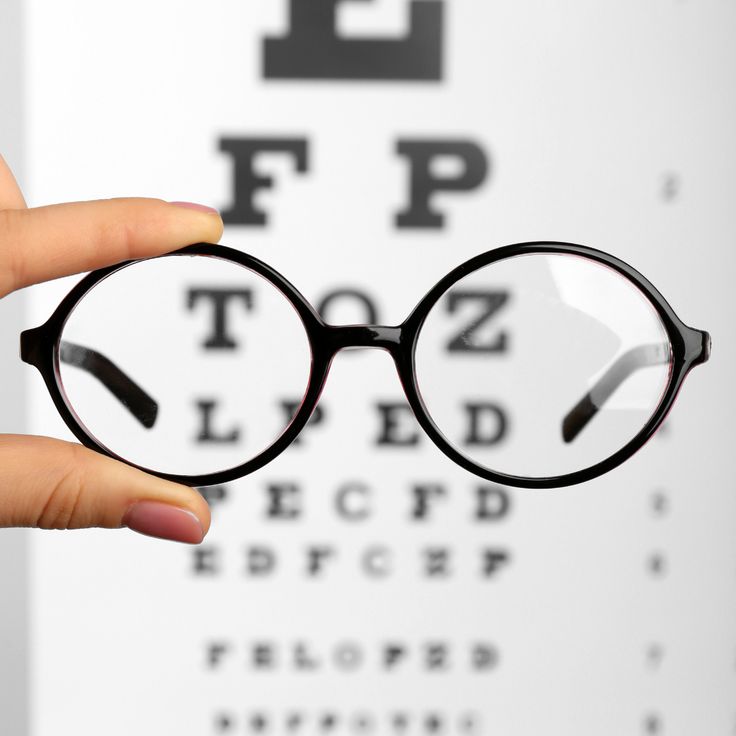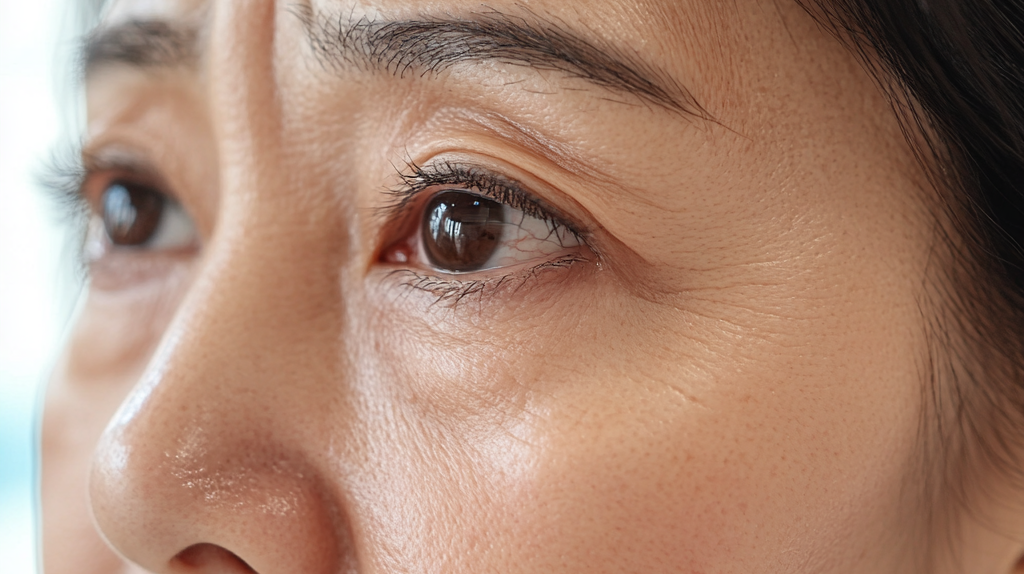

 Thank you for contacting us!
Thank you for contacting us!
We've received your inquiry.
Due to high demand, our respons time may take 1-2 business days.
We appreciate your patience and understanding.
 Thank you for contacting us!
Thank you for contacting us!
We've received your inquiry.
Due to high demand, our respons time may take 1-2 business days.
We appreciate your patience and understanding.
As of the 17th, BGN Eye Clinic has been officially designated as a certified partner ofthe Korea National Team Athletes Association, which includes many current and former national athletes.On this day, we provided a range of medical services to visiting national athletes, including comprehensive eye examinations and dry eye treatments.BGN Eye Clinic will continue to support the healthy vision and clear eyesight of our national athletes with ongoing care and commitment.

 • Foto e video di Instagram.jfif)
If you’ve been researching LASIK or SMILE Pro in Korea, you’ve probably noticed one confusing thing: Prices look similar, but every clinic offers different “packages.”So what’s the real price? What should you expect before deciding on surgery?Here’s the simple truth most people don’t hear:The base price of surgery is generally the same — the difference comes from which package you choose and what your doctor recommends after checking your eyes.In other words, you’re not paying for a “different method.” You’re paying for a different level of care, diagnostics, and after-care system. For an accurate price range, please get a consultation:📞 Tel: 010-3435-5770 (KakaoTalk, WhatsApp available) 📧 Email: info@bgneyeclinic.com Website: bgneyeclinic.com Address: Lotte World Tower, 11th Floor, 300 Olympic Road, Songpa-gu, Seoul, Korea#SMILEPro #LaserEyeSurgery #VisionCorrection #ClearVision #EyeSurgery #MyopiaTreatment #AstigmatismCorrection #NoMoreGlasses #NoMoreContacts #EyeCare #BGNEyeClinic #ZeissTechnology #SeoulEyeClinic #ExpertSurgeons #InternationalPatients #MedicalTourismKorea #SafeEyeSurgery
.jpg)
Surgery for improving vision has evolved dramatically over the past decade. What began as a bold medical idea — reshaping the eye to reduce dependence on glasses — has developed into one of the most refined fields in modern ophthalmology. Today, vision correction is no longer a single method or technique. It is a spectrum of advanced procedures designed around how the eye works, how people live, and how safely the cornea can be preserved.In the past, most surgeries required creating a large corneal flap, which meant longer recovery and more delicate aftercare. But technological progress has introduced entirely new approaches. One of the most remarkable changes is the ability to correct vision through a tiny 2–3 mm micro-incision, allowing the eye to maintain more of its natural strength while recovering faster than ever before.Among these innovations, SMILE LASIK has become a leading option worldwide, and especially in Korea, where high surgical standards and advanced diagnostic systems have made the procedure widely trusted. SMILE offers strong long-term stability, natural visual clarity, and minimal disruption to the cornea — qualities that continue to make it a preferred choice for active adults, professionals, and even those with dry-eye tendencies. At BGN Eye Clinic, SMILE is approached not just as a laser procedure but as part of a larger medical process: detailed diagnostics, careful selection of the safest method, and precise surgical planning supported by decades of clinical experience. This system ensures that each patient receives a treatment truly suited to their eyes — whether that means SMILE, LASIK, LASEK, ICL, or another method.#SMILEPro #LaserEyeSurgery #VisionCorrection #ClearVision #EyeSurgery #MyopiaTreatment #AstigmatismCorrection #NoMoreGlasses #NoMoreContacts #EyeCare #BGNEyeClinic #ZeissTechnology #SeoulEyeClinic #ExpertSurgeons #InternationalPatients #MedicalTourismKorea #SafeEyeSurgery📞 Tel: 010-3435-5770 (KakaoTalk, WhatsApp available) 📧 Email: info@bgneyeclinic.com Website: bgneyeclinic.com Address: Lotte World Tower, 11th Floor, 300 Olympic Road, Songpa-gu, Seoul, Korea

Why does vision get blurry as we age? Many people start noticing changes in their 40s, 50s, or 60s: reading becomes harder, night driving feels uncomfortable, and lights seem to have a soft halo around them. These changes are gradual, and because they happen slowly, most people assume it’s just fatigue or normal aging. But inside the eye, something very specific is happening.At the center of this process is the crystalline lens — the clear, flexible part of the eye responsible for focusing light. When we are young, this lens is transparent and adjusts easily when we shift our vision from near to far. Over time, however, the lens begins to lose flexibility and clarity. Natural proteins inside the lens start to clump together, and this slowly turns the once-clear lens into something more like frosted glass.This loss of clarity is the beginning of a cataract. It causes light to scatter instead of focusing sharply on the retina. As a result, vision becomes hazy, colors look faded, night vision declines, and bright lights create glare. People often describe the feeling as “looking through a dirty window,” even though the change happens so gradually that it can be hard to notice at first.Cataracts are not something a person “catches.” They are a natural part of aging — almost everyone will develop them if they live long enough. The brain adapts to slow vision changes, which is why many people do not realize how much clarity they’ve lost until the cataract becomes advanced or begins to interfere with daily activities. Once the clouding reaches a certain point, glasses no longer help, and the only way to restore vision is to replace the cloudy lens with a clear artificial one. Modern cataract surgery is highly precise, minimally invasive, and often results in clearer vision than the person had years before.#SMILEPro #LaserEyeSurgery #VisionCorrection #ClearVision #EyeSurgery #MyopiaTreatment #AstigmatismCorrection #NoMoreGlasses #NoMoreContacts #EyeCare #BGNEyeClinic #ZeissTechnology #SeoulEyeClinic #ExpertSurgeons #InternationalPatients #MedicalTourismKorea #SafeEyeSurgery📞 Tel: 010-3435-5770 (KakaoTalk, WhatsApp available) 📧 Email: info@bgneyeclinic.com Website: bgneyeclinic.com Address: Lotte World Tower, 11th Floor, 300 Olympic Road, Songpa-gu, Seoul, Korea

High myopia and high astigmatism are becoming more common worldwide, especially among people who spend long hours reading, studying, or using digital devices. Many people with strong prescriptions eventually ask the same question: Can this be fixed permanently? The answer is more complex than a simple yes or no, because high refractive errors involve deeper structural changes in the eye, not just blurry vision.Myopia, or nearsightedness, occurs when the eye grows longer than normal. When this elongation becomes significant, it is considered “high myopia.” Light entering the eye focuses in front of the retina instead of directly on it, which makes distant objects blurry. High myopia is not only about stronger glasses—it can increase the risk of retinal tears, retinal detachment, macular changes, and early cataracts. Because the eye is physically stretched, long-term monitoring is just as important as vision correction.Astigmatism is different. It occurs when the cornea or lens has an uneven curve. Instead of focusing light evenly, the eye bends light in multiple directions, creating shadowing, double outlines, and difficulty seeing clearly at any distance. High astigmatism can make night driving stressful and can cause headaches, eye strain, and poor focus throughout the day.When people ask about permanent correction, they often mean whether modern surgical procedures can reduce or eliminate the need for glasses or contact lenses. Today’s ophthalmology offers several solutions. Laser procedures such as SMILE, LASIK, or LASEK reshape the cornea to correct both myopia and astigmatism, but their suitability depends on factors like corneal thickness, eye shape, and prescription level. For very high degrees, lens-based solutions such as ICL (implantable collamer lenses) or lens replacement surgery may provide a more stable and long-term correction, especially when the cornea is too thin or the prescription is beyond laser limits.These procedures can significantly reduce or completely remove dependence on glasses, but it is important to understand that nothing stops the eye from aging. A person may still develop presbyopia later in life or form cataracts in older age. Vision correction solves the refractive error, but it does not change natural aging processes. This is why surgeons always emphasize realistic expectations and long-term eye health.For many patients, a permanent correction is possible in the sense that the treated refractive error—myopia or astigmatism—does not “grow back.” However, the right method must be chosen carefully. A detailed examination is essential to measure corneal strength, retinal condition, prescription stability, and overall eye health. People with high myopia also need regular retinal checkups, even after successful vision correction, because the structural risks remain. Understanding high myopia and high astigmatism helps patients make informed decisions. These conditions are more than just strong glasses—they reflect physical changes in the eye that deserve proper evaluation and ongoing care. With the right approach, many people can safely and successfully correct their refractive errors and enjoy clearer, more comfortable vision for many years.#SMILEPro #LaserEyeSurgery #VisionCorrection #ClearVision #EyeSurgery #MyopiaTreatment #AstigmatismCorrection #NoMoreGlasses #NoMoreContacts #EyeCare #BGNEyeClinic #ZeissTechnology #SeoulEyeClinic #ExpertSurgeons #InternationalPatients #MedicalTourismKorea #SafeEyeSurgery📞 Tel: 010-3435-5770 (KakaoTalk, WhatsApp available) 📧 Email: info@bgneyeclinic.com Website: bgneyeclinic.com Address: Lotte World Tower, 11th Floor, 300 Olympic Road, Songpa-gu, Seoul, Korea

I’m Lina, and this is the story of how my life changed at BGN Eye Clinic in Lotte Tower, Seoul.For years, I lived behind my contact lenses. As a hospital worker on night shifts, my eyes often felt dry and tired. I dreamed of a solution that would give me freedom, comfort, and clear vision. When I heard about SMILE Pro surgery, I knew it could be the answer.First Steps at BGN Eye ClinicWalking into the clinic, I felt both nervous and excited. The team welcomed me with warmth, and what impressed me most was how thorough and detailed the process was. Multiple tests were done to make sure I was the right candidate—not just to see if I could have the surgery, but to ensure it would truly be the best option for me.Even better, the clinic worked with my tight travel schedule. Since I was only in Korea for a short time, they arranged everything—from consultation to surgery—all in a single day.Care That Speaks Your LanguageAs an international patient, I was relieved to find staff who spoke fluent English. No confusion, no stress—just smooth communication. Every question I had, they answered with patience and clarity. I never felt alone in the process.The Surgery ItselfThe surgery was quick, and while lying under the laser felt a little strange, the doctors’ calm voices and reassuring words made all the difference. They truly understood what patients feel in those moments.A Recovery That Surprised MeWhat amazed me most was the recovery. Within just 4–5 hours, my vision began to clear. By the next morning, I was already back at the clinic for a follow-up, seeing the world with fresh eyes—literally.Why I’m GratefulLooking back, I’m thankful I trusted BGN Eye Clinic with this life-changing decision. They combined world-class technology, expert care, and genuine kindness, making my journey smooth from start to finish.Today, I no longer worry about dry eyes from long shifts or fumbling with contact lenses. Instead, I wake up every morning with clear vision—and a smile.📞 Tel: 010-3435-5770 (KakaoTalk, WhatsApp available) 📧 Email: info@bgneyeclinic.comWebsite: bgneyeclinic.com Address: Lotte World Tower, 11th Floor, 300 Olympic Road, Songpa-gu, Seoul, Korea#SMILEPro #LaserEyeSurgery #VisionCorrection #ClearVision #EyeSurgery #MyopiaTreatment #AstigmatismCorrection #NoMoreGlasses #NoMoreContacts #EyeCare #BGNEyeClinic #ZeissTechnology #SeoulEyeClinic #ExpertSurgeons #InternationalPatients #MedicalTourismKorea #SafeEyeSurgery
.jpg)
For many people who have lived with glasses or contact lenses, the idea of waking up and seeing clearly without assistance feels like a dream. Over the past two decades, that dream has become reality for millions thanks to vision correction surgery. Among the most advanced procedures available today, LASIK and SMILE Pro are the two leading choices.But which one is right for you? And why are so many patients from around the world traveling to Seoul, South Korea to have these surgeries performed? Let’s take a deep dive into both procedures, compare their benefits, and explore why Korea has become one of the global leaders in refractive surgery.The Evolution of Vision CorrectionWhen LASIK first became popular in the late 1990s and early 2000s, it revolutionized the field of ophthalmology. Suddenly, patients who had relied on thick glasses or daily contact lenses could regain clear, natural vision in just a matter of minutes.But technology doesn’t stand still. While LASIK remained the “gold standard” for years, new innovations emerged to make surgery less invasive, more precise, and even more comfortable. That’s where SMILE (Small Incision Lenticule Extraction), and now its newest generation SMILE Pro, enter the picture.Understanding how these procedures work — and how they differ — is the first step to making an informed decision.LASIK: The Established ClassicLASIK stands for Laser-Assisted in Situ Keratomileusis. Though the name sounds complex, the process is straightforward:A thin flap is created on the corneal surface.An excimer laser reshapes the underlying corneal tissue to correct the refractive error.The flap is carefully repositioned and allowed to heal.Advantages of LASIKFast recovery: Many patients achieve near-perfect vision within 24–48 hours.Proven track record: More than 30 million people worldwide have undergone LASIK.Availability: Nearly every eye clinic offering refractive surgery provides LASIK, making it accessible.ConsiderationsBecause a corneal flap is created, patients may experience slightly higher risks of flap-related complications (though rare with modern techniques).Some patients report dryness or glare during recovery, which can last for several weeks.LASIK remains a reliable, time-tested option, especially for those with moderate prescriptions and good corneal thicknessSMILE Pro: The Next GenerationSMILE (Small Incision Lenticule Extraction) was introduced as a flap-free alternative to LASIK. Instead of creating a large flap, SMILE uses a femtosecond laser to create a tiny, lens-shaped piece of tissue inside the cornea, known as a lenticule.In the SMILE Pro procedure:The ZEISS VisuMax 800 laser creates a lenticule within the cornea.This lenticule is removed through a micro-incision of just 2 mm.No large flap is required, leaving most of the corneal structure intact.Advantages of SMILE ProMinimally invasive: Preserves more corneal integrity and biomechanics.Lower risk of dry eyes: Because fewer corneal nerves are disrupted.Quick comfort: Patients often report less discomfort during recovery compared to LASIK.Precision with new technology: The ZEISS VisuMax 800 allows faster, more accurate laser application, shortening surgery time.ConsiderationsAvailability: Not every clinic offers SMILE Pro — it requires specialized ZEISS technology.Candidacy: Some patients, such as those with extremely thin corneas or certain prescriptions, may not be ideal candidates.SMILE Pro has quickly become the preferred choice for patients seeking cutting-edge, minimally invasive surgery with a smoother recovery experience.#SMILEPro #LASIK #VisionCorrection #EyeSurgery #Seoul #Korea #RefractiveSurgery #ZEISS #MedicalTourism #BetterVision📞 Tel: 010-3435-5770 (KakaoTalk, WhatsApp available) 📧 Email: info@bgneyeclinic.comWebsite: bgneyeclinic.com Address: Lotte World Tower, 11th Floor, 300 Olympic Road, Songpa-gu, Seoul, Korea
.png)
As people enter their 40s, many begin to notice that nearby text becomes blurry or that they have to hold their smartphones farther away. That’s usually the first moment they wonder, “Is this presbyopia?”Presbyopia is a natural age-related condition caused by a loss of elasticity in the eye’s lens. While younger eyes can automatically focus between near and far objects, this ability gradually diminishes over time. As a result, nearby objects such as books or phones appear blurry, and people often find themselves constantly putting on and taking off reading glasses.At this stage, many people start to wonder whether vision correction surgeries like LASIK or LASEK are still possible. In the past, there was a common belief that such procedures were not suitable once presbyopia had begun, causing some to hesitate or give up entirely on the idea of surgery. However, with advancements in technology, it’s now often possible to undergo surgery—even with presbyopia—depending on the condition of your eyes.At BGN Eye Clinic in Jamsil, patients in their 40s and 50s who are considering vision correction surgery are evaluated not just for the goal of removing glasses, but also for achieving clear vision at both near and far distances. Rather than making decisions based on age alone, we prioritize detailed diagnostic tests to determine if the eye’s structure and function are suitable for surgery.We assess various factors including corneal thickness and shape, accommodative ability, lens condition, and lifestyle patterns. Some patients, despite having presbyopia, have eyes healthy enough to undergo vision correction procedures with high satisfaction. In contrast, if early signs of cataracts or severe loss of accommodation are present, a different surgical approach may be more appropriate, highlighting the importance of accurate diagnosis.You might think, “I can just use reading glasses, right?” But many people endure the inconvenience and discomfort of readers for years. Constantly needing to carry reading glasses or switching them on and off throughout the day can lower your quality of life.If vision correction surgery can help reduce these burdens, it may very well be worth considering. Postoperative recovery and visual adaptation vary from person to person, so proper follow-up care is essential. At BGN Eye Clinic in Jamsil, we offer a structured treatment plan from pre-surgery to full recovery. After surgery, we regularly monitor vision changes and progress, and we provide eye drops or lifestyle guidance as needed.Most importantly, having presbyopia doesn’t automatically mean you must give up on vision correction surgery. While your eyes do change with age, age alone shouldn’t determine whether you’re a candidate for surgery. What truly matters is knowing the current condition of your eyes and choosing a treatment path that fits.At BGN Eye Clinic Jamsil, we provide personalized surgical solutions based on age and vision needs, aiming not just to eliminate glasses but to improve overall quality of life. Our detailed diagnostic and consultation systems are especially well-suited for middle-aged patients, offering a comfortable and reassuring experience for first-time visitors.Even if you have presbyopia, don’t assume surgery is no longer an option. With proper diagnostics, vision correction surgery may still be a valid and effective solution.If you’re curious about the condition of your eyes, come to BGN Eye Clinic Jamsil for a detailed exam and professional consultation. We’ll help you start a new chapter—one without reading glasses.
.png)
As people enter their 40s, many begin to notice that nearby text becomes blurry or that they have to hold their smartphones farther away. That’s usually the first moment they wonder, “Is this presbyopia?”Presbyopia is a natural age-related condition caused by a loss of elasticity in the eye’s lens. While younger eyes can automatically focus between near and far objects, this ability gradually diminishes over time. As a result, nearby objects such as books or phones appear blurry, and people often find themselves constantly putting on and taking off reading glasses.At this stage, many people start to wonder whether vision correction surgeries like LASIK or LASEK are still possible. In the past, there was a common belief that such procedures were not suitable once presbyopia had begun, causing some to hesitate or give up entirely on the idea of surgery. However, with advancements in technology, it’s now often possible to undergo surgery—even with presbyopia—depending on the condition of your eyes.At BGN Eye Clinic in Jamsil, patients in their 40s and 50s who are considering vision correction surgery are evaluated not just for the goal of removing glasses, but also for achieving clear vision at both near and far distances. Rather than making decisions based on age alone, we prioritize detailed diagnostic tests to determine if the eye’s structure and function are suitable for surgery.We assess various factors including corneal thickness and shape, accommodative ability, lens condition, and lifestyle patterns. Some patients, despite having presbyopia, have eyes healthy enough to undergo vision correction procedures with high satisfaction. In contrast, if early signs of cataracts or severe loss of accommodation are present, a different surgical approach may be more appropriate, highlighting the importance of accurate diagnosis.You might think, “I can just use reading glasses, right?” But many people endure the inconvenience and discomfort of readers for years. Constantly needing to carry reading glasses or switching them on and off throughout the day can lower your quality of life.If vision correction surgery can help reduce these burdens, it may very well be worth considering. Postoperative recovery and visual adaptation vary from person to person, so proper follow-up care is essential. At BGN Eye Clinic in Jamsil, we offer a structured treatment plan from pre-surgery to full recovery. After surgery, we regularly monitor vision changes and progress, and we provide eye drops or lifestyle guidance as needed.Most importantly, having presbyopia doesn’t automatically mean you must give up on vision correction surgery. While your eyes do change with age, age alone shouldn’t determine whether you’re a candidate for surgery. What truly matters is knowing the current condition of your eyes and choosing a treatment path that fits.At BGN Eye Clinic Jamsil, we provide personalized surgical solutions based on age and vision needs, aiming not just to eliminate glasses but to improve overall quality of life. Our detailed diagnostic and consultation systems are especially well-suited for middle-aged patients, offering a comfortable and reassuring experience for first-time visitors.Even if you have presbyopia, don’t assume surgery is no longer an option. With proper diagnostics, vision correction surgery may still be a valid and effective solution.If you’re curious about the condition of your eyes, come to BGN Eye Clinic Jamsil for a detailed exam and professional consultation. We’ll help you start a new chapter—one without reading glasses.

The Difference Between Presbyopia and Cataracts — Why It’s Important to Know Precisely!OverviewPresbyopia and cataracts are two common eye conditions that frequently affect people in middle age and beyond. Many patients confuse the two or assume they are similar, but in reality, their causes and treatments are entirely different.Understanding the distinction between them is crucial in choosing the right treatment path and protecting long-term vision health. In this article, we will explain the differences between these two conditions in an easy-to-understand, medical context.1. How Presbyopia and Cataracts DifferPresbyopia begins when the eye’s natural lens loses its elasticity and focusing ability due to aging. When we’re young, the lens is soft and flexible, allowing us to focus easily on nearby objects. However, as we age, the lens becomes stiffer and the muscles that help adjust focus weaken, making it harder to see things up close.In contrast, cataracts are caused by the clouding of the lens itself. Just like clear glass becoming foggy over time, protein changes within the lens, oxidative stress, and exposure to UV rays can all contribute to the gradual loss of transparency, resulting in blurred vision.In short, presbyopia is a problem with focusing, while cataracts involve the clouding of the lens.2. Onset and ProgressionPresbyopia typically starts to appear gradually after the age of 40. It’s considered a normal part of aging rather than a disease. It usually affects both eyes similarly, and while the progression rate varies from person to person, it tends to develop slowly over time.Cataracts usually become noticeable in the 60s, though in some cases they can develop earlier due to diabetes, trauma, or long-term medication use. Cataracts often begin with subtle symptoms, but as the clouding worsens, vision impairment can significantly impact daily life.3. Key Symptom DifferencesPresbyopia is characterized by difficulty reading small text up close, needing to hold books or smartphones at arm’s length to see clearly. The discomfort becomes more noticeable in low lighting or when tired. Distance vision is usually unaffected.Cataracts cause an overall blurriness in vision. Common symptoms include increased sensitivity to light, glare, or seeing halos around lights. Even with updated eyeglass prescriptions, vision may not improve, and night driving may become more difficult.When both conditions occur simultaneously, it becomes harder to identify the source of the problem without professional examination, as both near and far vision may be affected.4. Diagnosis and TreatmentPresbyopia is diagnosed through a near vision test and an assessment of accommodative function. It usually doesn't require imaging; a basic eye exam and patient history are often sufficient.Cataracts are diagnosed using a slit-lamp microscope to directly observe the clouding of the lens. The severity and location of the clouding are assessed to determine the stage. If surgery is needed, detailed measurements of the eye, including axial length and corneal curvature, are taken to select the appropriate intraocular lens.Presbyopia cannot be reversed, but its symptoms can be managed. Reading glasses are the most common solution, though progressive lenses, multifocal contact lenses, or surgical options for presbyopia correction are also available. However, the decision to undergo surgery should be based on a careful assessment of lifestyle needs, visual demands, and overall eye health.Cataracts, on the other hand, can only be treated through surgery in which the cloudy lens is replaced with an artificial intraocular lens. Thanks to medical advancements, the procedure is quick and recovery is relatively fast. Patients can now choose from a variety of lens options, including monofocal, multifocal, and toric lenses, depending on their eye condition and lifestyle.ConclusionPresbyopia and cataracts are both age-related vision changes that can affect anyone in middle age or later. However, they have completely different causes and treatment approaches. Presbyopia results from a physiological loss of near focusing ability, while cataracts are a disease involving lens clouding. Presbyopia is managed with corrective aids or surgery, while cataracts are treated surgically.Because both conditions can occur together, it’s important not to self-diagnose when you experience visual discomfort. A comprehensive eye exam is essential to identify the root cause and determine the best course of action. Since vision is closely tied to quality of life, don’t delay in taking care of your eye health—start now by getting a professional evaluation.

Smile Pro Experience at BGN Eye ClinicA Patient Testimonial from San Francisco, USA When Alex Leone traveled from San Francisco to Korea, he arrived with minimal expectations and only a recommendation from a friend. However, after completing his Smile Pro procedure and follow-up care at BGN Eye Clinic, he quickly understood why so many international patients choose this clinic for their vision correction. Alex explains that he initially decided to visit simply because someone he trusted had recommended the clinic. Although he did not know what to expect, the professionalism and organization he encountered immediately reassured him. From the moment he walked in, the staff made sure he felt welcomed, informed, and supported throughout each stage of the process. One of the aspects that stood out to Alex was the thoroughness and structure of the patient journey. Every step—from the initial examination and consultation to the surgery preparation and recovery—was clearly explained. He noted that the team guided him through the entire experience and helped him feel comfortable at all times. Smile Pro is known for its speed, precision, and minimally invasive technique, but for Alex, the human side of the experience was equally important. He emphasized that even during the procedure itself, the medical team remained attentive and made sure he felt safe and cared for. This level of support helped alleviate any anxiety and contributed to a smooth surgical experience. Alex also highlighted that the high standard of care continued after the surgery. During the 24-hour follow-up visit, he found that the staff remained just as welcoming and attentive as they had been on the day of the procedure. Based on this consistent level of care, he described his experience as “five stars.” Reflecting on his time at the clinic, Alex shared that he would confidently recommend BGN Eye Clinic to anyone considering Smile Pro surgery. His experience demonstrated the clinic’s commitment to professionalism, patient comfort, and high-quality outcomes. BGN Eye Clinic continues to be a trusted choice for patients seeking effective and reliable vision correction. With advanced technology, experienced surgeons, and a comprehensive patient-care system, the clinic provides a safe and supportive environment for both local and international patients. For consultation inquiries or appointment scheduling, please contact us through the official website.For an accurate price range, please get a consultation:📞 Tel: 010-3435-5770 (KakaoTalk, WhatsApp available)📧 Email: info@bgneyeclinic.comWebsite: bgneyeclinic.comAddress: Lotte World Tower, 11th Floor, 300 Olympic Road, Songpa-gu, Seoul, Korea#SMILEPro #LaserEyeSurgery #VisionCorrection #ClearVision #EyeSurgery #MyopiaTreatment #AstigmatismCorrection #NoMoreGlasses #NoMoreContacts #EyeCare #BGNEyeClinic #ZeissTechnology #SeoulEyeClinic #ExpertSurgeons #InternationalPatients #MedicalTourismKorea #SafeEyeSurgery#SafeEyeSurgery

“Feeling Safe, Heard, and Supported — Sun Win’s Vision Correction Journey at BGN Eye Clinic”When Sun Win first began considering vision correction, the decision wasn’t about big change or transformation.It was about something simple and important: comfort, confidence, and trust.“Overall, I had a very safe and very comfortable experience.”From the first consultation, what stood out most to Sun Win was how thorough and clear the explanations were.Instead of rushing into a decision, the medical team carefully walked through each treatment package, step by step — what was included, why it mattered, and what kind of support would follow afterward. Choosing Comfort & CareAmong the available options, Sun Win chose the most comprehensive care plan, which included additional dry eye support after the procedure.This was particularly meaningful — because dryness can be a concern for many people after vision correction, and knowing there would be post-procedure comfort care provided reassurance.“The post-treatment for dry eyes really helped me feel comfortable.”This wasn’t just a physical treatment.It was emotional comfort — feeling seen, supported, and understood.Support Beyond LanguageOne detail Sun Win mentioned was how the optometry team supported them despite a language barrier.Not speaking Korean could have made the process stressful — but instead, the team made sure communication was clear, gentle, and never rushed.“The team was always supportive, even though I don’t speak Korean.”Small gestures can make a big difference — and in this case, they made the journey feel safe. A Recommendation From Experience, Not AdvertisingSun Win didn’t talk about dramatic change or big words.Just something simple and genuine:“It’s something that I would definitely recommend if you have the opportunity to come here and have a vision correction procedure.”No pressure.No exaggeration.Just one person sharing their experience.And sometimes — the most meaningful stories are exactly like that. A Gentle ReminderEvery patient’s eyes are unique — and so are their experiences.What matters most is choosing a clinic where you feel supported, listened to, and cared for throughout the journey.#BGN Eye Clinic #vision correction in Korea #Korea eye clinic review#expat eye clinic Korea #comfortable vision correction experience #dry eye care after surgery #patient experience BGN Eye Clinic#ophthalmology clinic Korea #vision correction consultation Korea\📞 Tel: 010-3435-5770 (KakaoTalk, WhatsApp available) 📧 Email: info@bgneyeclinic.com Website: bgneyeclinic.com Address: Lotte World Tower, 11th Floor, 300 Olympic Road, Songpa-gu, Seoul, Korea #SMILEPro #LaserEyeSurgery #VisionCorrection #ClearVision #EyeSurgery #MyopiaTreatment #AstigmatismCorrection #NoMoreGlasses #NoMoreContacts #EyeCare #BGNEyeClinic #ZeissTechnology #SeoulEyeClinic #ExpertSurgeons #InternationalPatients #MedicalTourismKorea

Lasik Surgery in Seoul — My SMILE Experience at BGN Eye Clinic Hi! I’m Fah, 35 years old, and I came all the way from Perth, Western Australia, to Seoul — not for sightseeing, but for something that truly changed my life: getting my eyes corrected.Like many people who spend hours staring at screens, I had been thinking about vision correction for years. After doing some research online, BGN Eye Clinic immediately caught my attention. Their reputation, technology, and friendly communication made me feel confident even before stepping into Korea. Booking Was So SimpleI was amazed at how easy it was to schedule everything. I just contacted the clinic on KakaoTalk, and they guided me through the entire process — no stress, no confusion. Everything felt smooth, fast, and well-organized, which is a huge relief when you’re traveling overseas for medical care.Quick, Clear, and Comfortable TestingAll the pre-surgery tests were done quickly and efficiently. What impressed me most was how phone-friendly the process was — I didn’t have to worry about paperwork or complicated forms. The staff explained each step clearly and made sure I was comfortable throughout. The Surgery Day — Fast and PainlessWhen the big day arrived, I was a little nervous (who wouldn’t be?), but the doctors and staff were incredibly kind and approachable. They explained everything in detail, which helped me relax. The actual SMILE surgery? It was over before I even realized it! Smooth, quick, and absolutely pain-free.Recovery That Surprised MeWhat truly amazed me was how fast I recovered. I could go out the very next day, walking around Seoul and seeing everything so clearly. There was no discomfort — just pure excitement at finally having sharp, natural vision.Totally Worth ItComing to Seoul for this procedure was one of the best decisions I’ve ever made. The experience was easy, safe, and genuinely life-changing. If you’re considering SMILE or LASIK surgery abroad, I can’t recommend BGN Eye Clinic enough. They made the entire journey — from booking to recovery — seamless and stress-free.Seeing the world clearly again is priceless, but if you’re wondering whether it’s worth the trip to Korea… trust me, it absolutely is.#BGNEyeClinic #SMILESurgery #LasikInKorea #VisionCorrection #EyeSurgeryKorea #SMILEPro #SeoulClinic #MedicalTourismKorea #KoreaHealthCare #EyeSurgeryExperience #ClearVision #LifeChangingMoment #TravelForHealth #SeoulJourney #LasikSurgeryReview #SMILEEyeSurgery #KoreaLasik #VisionRestored #BGNClinic #SMILEProKorea📞 Tel: 010-3435-5770 (KakaoTalk, WhatsApp available) 📧 Email: info@bgneyeclinic.com Website: bgneyeclinic.com Address: Lotte World Tower, 11th Floor, 300 Olympic Road, Songpa-gu, Seoul, Korea

“From glasses to clear vision — my journey with BGN Eye Clinic in Lotte Tower.”Discovering the Right Clinic in SeoulHello, my name is Taylor, and I’m from Colorado, USA. I had been wearing glasses since I was about eight or nine years old, and honestly, I never really loved them. I always dreamed of waking up and seeing the world clearly without reaching for my glasses first thing in the morning.When I finally decided to look into vision correction surgery, I started researching LASIK and SMILE eye surgery in Korea. I compared a few clinics online, but what stood out to me about BGN Eye Clinic was the detailed information on their website, the professional reviews, and how transparent they were about every step of the process. That gave me the confidence to reach out.Choosing SMILE Pro (Triple Pro Smile)A friend of mine had traveled to Seoul before and had LASIK done — they couldn’t stop talking about how smooth everything went. After hearing their story, I thought, why not me? So I decided to go for Triple Pro Smile, the latest generation of SMILE LASIK surgery offered at BGN Eye Clinic, located in the tallest building in Seoul — Lotte World Tower.The Day of SurgeryI arrived at the clinic around 10 in the morning and finished everything by early afternoon. The process was incredibly efficient. From the moment I walked in, the staff recognized how nervous I was and did an amazing job calming me down. They guided me through each step — from the detailed eye examination to the actual SMILE Pro procedure — with such care and professionalism.Honestly, I was surprised by how quick and comfortable the surgery was. The entire procedure was over before I even had time to overthink it!Clear Vision, Same DayAfter the surgery, the post-op instructions were clear and easy to follow. By evening, I could already notice my vision improving, enough to walk around and enjoy the city lights of Seoul without glasses for the first time in my life. It was surreal.My Honest ReviewIf you’re considering SMILE LASIK or SMILE Pro in Korea, I can say from experience — it’s worth it. The combination of cutting-edge ZEISS technology and caring medical staff at BGN Eye Clinic made all the difference.Whether you’re struggling with dry eyes, astigmatism, or just tired of glasses and contact lenses, SMILE Pro eye surgery can truly change your daily life.Final ThoughtsTraveling all the way from the U.S. to Seoul for eye surgery might sound daunting, but for me, it was one of the best decisions I’ve ever made. The BGN team made it feel effortless — from consultation to recovery. If you’ve been searching for the best LASIK clinic in Korea or wondering “Is SMILE LASIK safe?” or “How fast is the recovery after SMILE Pro?” — take it from me: the results speak for themselves.#MedicalTourismKorea #LASIKAbroad #KoreaVisionCorrection #EyeSurgeryAbroad #TravelForLASIK #BestEyeClinicSeoul #KoreanEyeClinic #InternationalPatientsWelcome📞 Tel: 010-3435-5770 (KakaoTalk, WhatsApp available) 📧 Email: info@bgneyeclinic.comWebsite: bgneyeclinic.com Address: Lotte World Tower, 11th Floor, 300 Olympic Road, Songpa-gu, Seoul, Korea

Are Eye Supplements Really Effective?Blurry vision, eye fatigue, and discomfort—most people today have experienced at least one of these symptoms. When these issues become frequent, it’s natural to become curious about supplements that claim to support eye health.Just a quick visit to a pharmacy or online store reveals countless products labeled “Good for Eye Health with Lutein” or “Supports Tired Eyes with Zeaxanthin.” But the real question is:Do eye supplements actually help?To be direct, it's difficult to guarantee any “dramatic effects.” However, that doesn’t mean they’re completely useless. Let’s break down why that is.Key Ingredients and Their RolesMost eye supplements contain ingredients such as lutein and zeaxanthin. These compounds help maintain macular pigment density and are known to protect the eyes from ultraviolet light and blue light.Astaxanthin and vitamins C and E serve as antioxidants that protect cells from damage, while zinc supports the normal function of visual cells. Omega-3 fatty acids may improve tear film stability, potentially helping with dry eyes. Anthocyanins are known to improve blood circulation and may help relieve eye fatigue.Each of these ingredients could offer potential benefits to eye health, but their effectiveness depends heavily on individual factors such as physiology, diet, and lifestyle.Why Do Some Say “They Don’t Work”?Skepticism around eye supplements often stems from the fact that they are not medications intended to directly treat disease.Dietary supplements are designed to support health—not to cure or reverse conditions like cataracts, macular degeneration, or retinal disorders. Additionally, the studies that support the efficacy of these nutrients usually involve long-term intake and report only modest, statistically small effects.In short, taking supplements for just a few weeks or months is unlikely to noticeably reduce eye fatigue or improve vision.When Might They Be Helpful?This doesn’t mean that eye supplements are completely without value. In fact, they can offer some benefits under certain conditions.For example, individuals who consume insufficient vegetables or lack lutein and zeaxanthin in their diet may benefit from supplementation. Office workers or those who spend prolonged periods looking at screens may also benefit from the antioxidant support to reduce oxidative stress in eye tissues.Family history is another key consideration. Those with a family history of retinal diseases such as macular degeneration or diabetic retinopathy may find antioxidant supplements helpful as a preventative measure.Omega-3 fatty acids, in particular, have shown promise in improving tear stability and alleviating symptoms of dry eye.Lifestyle Habits Matter More Than SupplementsThe most important factors for eye health are lifestyle habits and regular check-ups. Supplements are only supportive tools, and without the foundation of healthy daily practices, their effectiveness is limited.If you work long hours at a computer, the 20-20-20 rule—looking 20 feet away for 20 seconds every 20 minutes—can help reduce strain.Adequate sleep, hydration, a consistent daily routine, and appropriate lighting also contribute significantly to reducing eye fatigue. Contact lens users should limit wear time and maintain strict hygiene.For those over 40, yearly comprehensive eye exams are essential for detecting structural changes early.Supplements Should Be Treated as Support, Not CureEye supplements are not miracle treatments. However, when used consistently as part of a broader strategy involving diet and lifestyle adjustments, they can be a meaningful part of maintaining eye health.Avoid being misled by exaggerated marketing claims or vague testimonials. Instead, assess your personal health status and consult an eye care professional before beginning any supplement regimen. Based on precise tests for dry eyes, retina, or lens condition, your doctor can help guide the most appropriate choices.Eye health isn’t something that can be fixed overnight. The small steps you take today can protect your vision ten years down the road. If your eyes feel uncomfortable, start with an accurate diagnosis before turning to supplements.BGN Eye Clinic Jamsil is always here to support your vision. Thank you.
.jpg)
After a long day, when you turn off the lights and start to relax, have you ever noticed that your vision becomes blurry or dim? Do strong light sources like street lamps or phone screens appear scattered or glaring? Many people simply dismiss these symptoms as fatigue or aging, but if your eyes consistently feel strained or your vision feels cloudy at night, it could be a sign of an underlying eye condition.The human eye is designed to adjust to changes in light and allow clear vision even in dim environments. However, when this adjustment function weakens or structural changes occur inside the eye, night vision problems such as dimness or difficulty seeing in the dark may appear. Conditions commonly associated with these symptoms include night blindness, early-stage cataracts, dry eye syndrome, and retinal disorders.Night vision discomfort doesn’t arise from a single cause. One common reason is cataracts. When the eye’s natural lens becomes cloudy, light is no longer transmitted properly through the eye. This effect is especially noticeable at night when the surroundings are darker, and lights appear more diffused or hazy.While daylight may somewhat compensate for this issue, it becomes much more prominent in dim environments.Night blindness, or nyctalopia, is another condition where the eyes struggle to adapt in dark settings. It can result from vitamin A deficiency but may also be caused by retinal degenerative diseases like retinitis pigmentosa. Though rare in younger people, it may still occur and should not be dismissed as a simple vision issue—it could be an early sign of retinal dysfunction.Dry eye syndrome is also a major contributor to night-time eye discomfort. Particularly common among contact lens users or people who frequently use smartphones and digital screens, dry eye symptoms worsen at night when tear production is reduced or uneven, leading to blurry vision and a gritty sensation in the eyes.If You Notice These Symptoms, Consider an Eye ExamHere are some warning signs to watch out for:1. Difficulty adjusting to darkness or slow adaptation in dim environments2. Frequent glare, halos, or starbursts around lights3. Trouble seeing road signs or headlights clearly while driving at night4. Blurred vision even under indoor lighting5. Eye dryness, fatigue, burning, or stinging sensationIgnoring these symptoms as just fatigue or aging can lead to long-term vision damage. Conditions like cataracts and glaucoma often develop silently and are difficult to detect in the early stages. Delayed diagnosis may result in irreversible vision loss, so early vigilance is crucial.If you experience any of these signs—or even if you don’t—it’s best to undergo regular eye exams to monitor the health of your eyes. For those who struggle with night vision, a comprehensive exam can help detect any structural or functional abnormalities early on.Don’t Ignore the Signals Your Eyes Are SendingAmong all the senses we rely on daily, our eyes handle the most information. Eye strain or visual changes aren’t just temporary discomforts—they can be critical signals from your body. In today’s world, where we’re constantly exposed to smartphones, monitors, and LED lighting, protecting your eyes requires even more attention.If your daily life includes frequent night driving or working in dimly lit environments, you may be especially sensitive to changes in vision. Don’t brush off even minor symptoms—act quickly to protect your eyesight. If you’re dealing with night vision issues, don’t wait until small symptoms become bigger problems. Seek a proper diagnosis and start treatment early to regain clear and comfortable vision.When it comes to your eye health, early intervention is key.

Smile Pro Experience at BGN Eye ClinicA Patient Testimonial from San Francisco, USA When Alex Leone traveled from San Francisco to Korea, he arrived with minimal expectations and only a recommendation from a friend. However, after completing his Smile Pro procedure and follow-up care at BGN Eye Clinic, he quickly understood why so many international patients choose this clinic for their vision correction. Alex explains that he initially decided to visit simply because someone he trusted had recommended the clinic. Although he did not know what to expect, the professionalism and organization he encountered immediately reassured him. From the moment he walked in, the staff made sure he felt welcomed, informed, and supported throughout each stage of the process. One of the aspects that stood out to Alex was the thoroughness and structure of the patient journey. Every step—from the initial examination and consultation to the surgery preparation and recovery—was clearly explained. He noted that the team guided him through the entire experience and helped him feel comfortable at all times. Smile Pro is known for its speed, precision, and minimally invasive technique, but for Alex, the human side of the experience was equally important. He emphasized that even during the procedure itself, the medical team remained attentive and made sure he felt safe and cared for. This level of support helped alleviate any anxiety and contributed to a smooth surgical experience. Alex also highlighted that the high standard of care continued after the surgery. During the 24-hour follow-up visit, he found that the staff remained just as welcoming and attentive as they had been on the day of the procedure. Based on this consistent level of care, he described his experience as “five stars.” Reflecting on his time at the clinic, Alex shared that he would confidently recommend BGN Eye Clinic to anyone considering Smile Pro surgery. His experience demonstrated the clinic’s commitment to professionalism, patient comfort, and high-quality outcomes. BGN Eye Clinic continues to be a trusted choice for patients seeking effective and reliable vision correction. With advanced technology, experienced surgeons, and a comprehensive patient-care system, the clinic provides a safe and supportive environment for both local and international patients. For consultation inquiries or appointment scheduling, please contact us through the official website.For an accurate price range, please get a consultation:📞 Tel: 010-3435-5770 (KakaoTalk, WhatsApp available)📧 Email: info@bgneyeclinic.comWebsite: bgneyeclinic.comAddress: Lotte World Tower, 11th Floor, 300 Olympic Road, Songpa-gu, Seoul, Korea#SMILEPro #LaserEyeSurgery #VisionCorrection #ClearVision #EyeSurgery #MyopiaTreatment #AstigmatismCorrection #NoMoreGlasses #NoMoreContacts #EyeCare #BGNEyeClinic #ZeissTechnology #SeoulEyeClinic #ExpertSurgeons #InternationalPatients #MedicalTourismKorea #SafeEyeSurgery#SafeEyeSurgery

“Feeling Safe, Heard, and Supported — Sun Win’s Vision Correction Journey at BGN Eye Clinic”When Sun Win first began considering vision correction, the decision wasn’t about big change or transformation.It was about something simple and important: comfort, confidence, and trust.“Overall, I had a very safe and very comfortable experience.”From the first consultation, what stood out most to Sun Win was how thorough and clear the explanations were.Instead of rushing into a decision, the medical team carefully walked through each treatment package, step by step — what was included, why it mattered, and what kind of support would follow afterward. Choosing Comfort & CareAmong the available options, Sun Win chose the most comprehensive care plan, which included additional dry eye support after the procedure.This was particularly meaningful — because dryness can be a concern for many people after vision correction, and knowing there would be post-procedure comfort care provided reassurance.“The post-treatment for dry eyes really helped me feel comfortable.”This wasn’t just a physical treatment.It was emotional comfort — feeling seen, supported, and understood.Support Beyond LanguageOne detail Sun Win mentioned was how the optometry team supported them despite a language barrier.Not speaking Korean could have made the process stressful — but instead, the team made sure communication was clear, gentle, and never rushed.“The team was always supportive, even though I don’t speak Korean.”Small gestures can make a big difference — and in this case, they made the journey feel safe. A Recommendation From Experience, Not AdvertisingSun Win didn’t talk about dramatic change or big words.Just something simple and genuine:“It’s something that I would definitely recommend if you have the opportunity to come here and have a vision correction procedure.”No pressure.No exaggeration.Just one person sharing their experience.And sometimes — the most meaningful stories are exactly like that. A Gentle ReminderEvery patient’s eyes are unique — and so are their experiences.What matters most is choosing a clinic where you feel supported, listened to, and cared for throughout the journey.#BGN Eye Clinic #vision correction in Korea #Korea eye clinic review#expat eye clinic Korea #comfortable vision correction experience #dry eye care after surgery #patient experience BGN Eye Clinic#ophthalmology clinic Korea #vision correction consultation Korea\📞 Tel: 010-3435-5770 (KakaoTalk, WhatsApp available) 📧 Email: info@bgneyeclinic.com Website: bgneyeclinic.com Address: Lotte World Tower, 11th Floor, 300 Olympic Road, Songpa-gu, Seoul, Korea #SMILEPro #LaserEyeSurgery #VisionCorrection #ClearVision #EyeSurgery #MyopiaTreatment #AstigmatismCorrection #NoMoreGlasses #NoMoreContacts #EyeCare #BGNEyeClinic #ZeissTechnology #SeoulEyeClinic #ExpertSurgeons #InternationalPatients #MedicalTourismKorea

Lasik Surgery in Seoul — My SMILE Experience at BGN Eye Clinic Hi! I’m Fah, 35 years old, and I came all the way from Perth, Western Australia, to Seoul — not for sightseeing, but for something that truly changed my life: getting my eyes corrected.Like many people who spend hours staring at screens, I had been thinking about vision correction for years. After doing some research online, BGN Eye Clinic immediately caught my attention. Their reputation, technology, and friendly communication made me feel confident even before stepping into Korea. Booking Was So SimpleI was amazed at how easy it was to schedule everything. I just contacted the clinic on KakaoTalk, and they guided me through the entire process — no stress, no confusion. Everything felt smooth, fast, and well-organized, which is a huge relief when you’re traveling overseas for medical care.Quick, Clear, and Comfortable TestingAll the pre-surgery tests were done quickly and efficiently. What impressed me most was how phone-friendly the process was — I didn’t have to worry about paperwork or complicated forms. The staff explained each step clearly and made sure I was comfortable throughout. The Surgery Day — Fast and PainlessWhen the big day arrived, I was a little nervous (who wouldn’t be?), but the doctors and staff were incredibly kind and approachable. They explained everything in detail, which helped me relax. The actual SMILE surgery? It was over before I even realized it! Smooth, quick, and absolutely pain-free.Recovery That Surprised MeWhat truly amazed me was how fast I recovered. I could go out the very next day, walking around Seoul and seeing everything so clearly. There was no discomfort — just pure excitement at finally having sharp, natural vision.Totally Worth ItComing to Seoul for this procedure was one of the best decisions I’ve ever made. The experience was easy, safe, and genuinely life-changing. If you’re considering SMILE or LASIK surgery abroad, I can’t recommend BGN Eye Clinic enough. They made the entire journey — from booking to recovery — seamless and stress-free.Seeing the world clearly again is priceless, but if you’re wondering whether it’s worth the trip to Korea… trust me, it absolutely is.#BGNEyeClinic #SMILESurgery #LasikInKorea #VisionCorrection #EyeSurgeryKorea #SMILEPro #SeoulClinic #MedicalTourismKorea #KoreaHealthCare #EyeSurgeryExperience #ClearVision #LifeChangingMoment #TravelForHealth #SeoulJourney #LasikSurgeryReview #SMILEEyeSurgery #KoreaLasik #VisionRestored #BGNClinic #SMILEProKorea📞 Tel: 010-3435-5770 (KakaoTalk, WhatsApp available) 📧 Email: info@bgneyeclinic.com Website: bgneyeclinic.com Address: Lotte World Tower, 11th Floor, 300 Olympic Road, Songpa-gu, Seoul, Korea

“From glasses to clear vision — my journey with BGN Eye Clinic in Lotte Tower.”Discovering the Right Clinic in SeoulHello, my name is Taylor, and I’m from Colorado, USA. I had been wearing glasses since I was about eight or nine years old, and honestly, I never really loved them. I always dreamed of waking up and seeing the world clearly without reaching for my glasses first thing in the morning.When I finally decided to look into vision correction surgery, I started researching LASIK and SMILE eye surgery in Korea. I compared a few clinics online, but what stood out to me about BGN Eye Clinic was the detailed information on their website, the professional reviews, and how transparent they were about every step of the process. That gave me the confidence to reach out.Choosing SMILE Pro (Triple Pro Smile)A friend of mine had traveled to Seoul before and had LASIK done — they couldn’t stop talking about how smooth everything went. After hearing their story, I thought, why not me? So I decided to go for Triple Pro Smile, the latest generation of SMILE LASIK surgery offered at BGN Eye Clinic, located in the tallest building in Seoul — Lotte World Tower.The Day of SurgeryI arrived at the clinic around 10 in the morning and finished everything by early afternoon. The process was incredibly efficient. From the moment I walked in, the staff recognized how nervous I was and did an amazing job calming me down. They guided me through each step — from the detailed eye examination to the actual SMILE Pro procedure — with such care and professionalism.Honestly, I was surprised by how quick and comfortable the surgery was. The entire procedure was over before I even had time to overthink it!Clear Vision, Same DayAfter the surgery, the post-op instructions were clear and easy to follow. By evening, I could already notice my vision improving, enough to walk around and enjoy the city lights of Seoul without glasses for the first time in my life. It was surreal.My Honest ReviewIf you’re considering SMILE LASIK or SMILE Pro in Korea, I can say from experience — it’s worth it. The combination of cutting-edge ZEISS technology and caring medical staff at BGN Eye Clinic made all the difference.Whether you’re struggling with dry eyes, astigmatism, or just tired of glasses and contact lenses, SMILE Pro eye surgery can truly change your daily life.Final ThoughtsTraveling all the way from the U.S. to Seoul for eye surgery might sound daunting, but for me, it was one of the best decisions I’ve ever made. The BGN team made it feel effortless — from consultation to recovery. If you’ve been searching for the best LASIK clinic in Korea or wondering “Is SMILE LASIK safe?” or “How fast is the recovery after SMILE Pro?” — take it from me: the results speak for themselves.#MedicalTourismKorea #LASIKAbroad #KoreaVisionCorrection #EyeSurgeryAbroad #TravelForLASIK #BestEyeClinicSeoul #KoreanEyeClinic #InternationalPatientsWelcome📞 Tel: 010-3435-5770 (KakaoTalk, WhatsApp available) 📧 Email: info@bgneyeclinic.comWebsite: bgneyeclinic.com Address: Lotte World Tower, 11th Floor, 300 Olympic Road, Songpa-gu, Seoul, Korea

Are Eye Supplements Really Effective?Blurry vision, eye fatigue, and discomfort—most people today have experienced at least one of these symptoms. When these issues become frequent, it’s natural to become curious about supplements that claim to support eye health.Just a quick visit to a pharmacy or online store reveals countless products labeled “Good for Eye Health with Lutein” or “Supports Tired Eyes with Zeaxanthin.” But the real question is:Do eye supplements actually help?To be direct, it's difficult to guarantee any “dramatic effects.” However, that doesn’t mean they’re completely useless. Let’s break down why that is.Key Ingredients and Their RolesMost eye supplements contain ingredients such as lutein and zeaxanthin. These compounds help maintain macular pigment density and are known to protect the eyes from ultraviolet light and blue light.Astaxanthin and vitamins C and E serve as antioxidants that protect cells from damage, while zinc supports the normal function of visual cells. Omega-3 fatty acids may improve tear film stability, potentially helping with dry eyes. Anthocyanins are known to improve blood circulation and may help relieve eye fatigue.Each of these ingredients could offer potential benefits to eye health, but their effectiveness depends heavily on individual factors such as physiology, diet, and lifestyle.Why Do Some Say “They Don’t Work”?Skepticism around eye supplements often stems from the fact that they are not medications intended to directly treat disease.Dietary supplements are designed to support health—not to cure or reverse conditions like cataracts, macular degeneration, or retinal disorders. Additionally, the studies that support the efficacy of these nutrients usually involve long-term intake and report only modest, statistically small effects.In short, taking supplements for just a few weeks or months is unlikely to noticeably reduce eye fatigue or improve vision.When Might They Be Helpful?This doesn’t mean that eye supplements are completely without value. In fact, they can offer some benefits under certain conditions.For example, individuals who consume insufficient vegetables or lack lutein and zeaxanthin in their diet may benefit from supplementation. Office workers or those who spend prolonged periods looking at screens may also benefit from the antioxidant support to reduce oxidative stress in eye tissues.Family history is another key consideration. Those with a family history of retinal diseases such as macular degeneration or diabetic retinopathy may find antioxidant supplements helpful as a preventative measure.Omega-3 fatty acids, in particular, have shown promise in improving tear stability and alleviating symptoms of dry eye.Lifestyle Habits Matter More Than SupplementsThe most important factors for eye health are lifestyle habits and regular check-ups. Supplements are only supportive tools, and without the foundation of healthy daily practices, their effectiveness is limited.If you work long hours at a computer, the 20-20-20 rule—looking 20 feet away for 20 seconds every 20 minutes—can help reduce strain.Adequate sleep, hydration, a consistent daily routine, and appropriate lighting also contribute significantly to reducing eye fatigue. Contact lens users should limit wear time and maintain strict hygiene.For those over 40, yearly comprehensive eye exams are essential for detecting structural changes early.Supplements Should Be Treated as Support, Not CureEye supplements are not miracle treatments. However, when used consistently as part of a broader strategy involving diet and lifestyle adjustments, they can be a meaningful part of maintaining eye health.Avoid being misled by exaggerated marketing claims or vague testimonials. Instead, assess your personal health status and consult an eye care professional before beginning any supplement regimen. Based on precise tests for dry eyes, retina, or lens condition, your doctor can help guide the most appropriate choices.Eye health isn’t something that can be fixed overnight. The small steps you take today can protect your vision ten years down the road. If your eyes feel uncomfortable, start with an accurate diagnosis before turning to supplements.BGN Eye Clinic Jamsil is always here to support your vision. Thank you.
.jpg)
After a long day, when you turn off the lights and start to relax, have you ever noticed that your vision becomes blurry or dim? Do strong light sources like street lamps or phone screens appear scattered or glaring? Many people simply dismiss these symptoms as fatigue or aging, but if your eyes consistently feel strained or your vision feels cloudy at night, it could be a sign of an underlying eye condition.The human eye is designed to adjust to changes in light and allow clear vision even in dim environments. However, when this adjustment function weakens or structural changes occur inside the eye, night vision problems such as dimness or difficulty seeing in the dark may appear. Conditions commonly associated with these symptoms include night blindness, early-stage cataracts, dry eye syndrome, and retinal disorders.Night vision discomfort doesn’t arise from a single cause. One common reason is cataracts. When the eye’s natural lens becomes cloudy, light is no longer transmitted properly through the eye. This effect is especially noticeable at night when the surroundings are darker, and lights appear more diffused or hazy.While daylight may somewhat compensate for this issue, it becomes much more prominent in dim environments.Night blindness, or nyctalopia, is another condition where the eyes struggle to adapt in dark settings. It can result from vitamin A deficiency but may also be caused by retinal degenerative diseases like retinitis pigmentosa. Though rare in younger people, it may still occur and should not be dismissed as a simple vision issue—it could be an early sign of retinal dysfunction.Dry eye syndrome is also a major contributor to night-time eye discomfort. Particularly common among contact lens users or people who frequently use smartphones and digital screens, dry eye symptoms worsen at night when tear production is reduced or uneven, leading to blurry vision and a gritty sensation in the eyes.If You Notice These Symptoms, Consider an Eye ExamHere are some warning signs to watch out for:1. Difficulty adjusting to darkness or slow adaptation in dim environments2. Frequent glare, halos, or starbursts around lights3. Trouble seeing road signs or headlights clearly while driving at night4. Blurred vision even under indoor lighting5. Eye dryness, fatigue, burning, or stinging sensationIgnoring these symptoms as just fatigue or aging can lead to long-term vision damage. Conditions like cataracts and glaucoma often develop silently and are difficult to detect in the early stages. Delayed diagnosis may result in irreversible vision loss, so early vigilance is crucial.If you experience any of these signs—or even if you don’t—it’s best to undergo regular eye exams to monitor the health of your eyes. For those who struggle with night vision, a comprehensive exam can help detect any structural or functional abnormalities early on.Don’t Ignore the Signals Your Eyes Are SendingAmong all the senses we rely on daily, our eyes handle the most information. Eye strain or visual changes aren’t just temporary discomforts—they can be critical signals from your body. In today’s world, where we’re constantly exposed to smartphones, monitors, and LED lighting, protecting your eyes requires even more attention.If your daily life includes frequent night driving or working in dimly lit environments, you may be especially sensitive to changes in vision. Don’t brush off even minor symptoms—act quickly to protect your eyesight. If you’re dealing with night vision issues, don’t wait until small symptoms become bigger problems. Seek a proper diagnosis and start treatment early to regain clear and comfortable vision.When it comes to your eye health, early intervention is key.